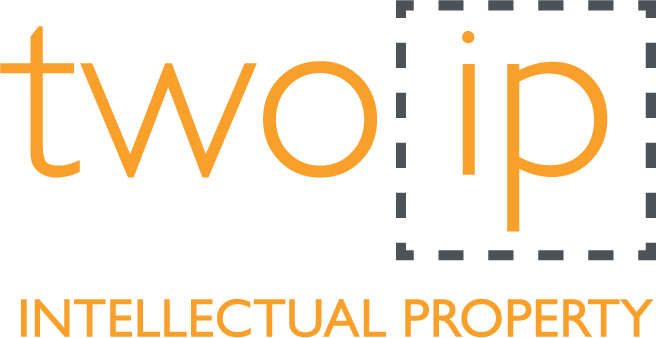Want to patent core-AI tech in the UK? Well, right now may be the best time to seek protection via the UK IPO providing your invention is not just a computer program! Two IP patent attorney Dr Coreena Brinck shares her views on the new UK IPO guidelines for examining AI inventions.
I was quite looking forward to reading the UK Intellectual Property Office (IPO) latest update to its guidelines for examining AI and Artificial Neural Network (ANN) implemented inventions. However, I can’t help but feel an opportunity to set out a best practice to clarify the law and reduce uncertainty for applicants in this area has been muddled and missed yet again.
This may be a deliberate ploy of course. The updates were published just before the UK IPO appeal to the Court of Appeal to overturn an earlier High Court decision which found in favour of the applicant in Emotional Perception AI Ltd v Comptroller-General of Patents, Designs and Trade Marks [2023] EWHC 2948 (Ch). This overturned a decision by the UK IPO to refuse a patent application on the basis the AI-related invention was nothing more than a computer program per se, and so unpatentable subject-matter. The Emotional Perception decision handed down by the High Court on 21st November 2023 led to a fundamental revision of the UK IPO practice as examiners were no longer able to treat ANN inventions as excluded subject-matter under the computer program per se objection. The UK IPO appealed the decision and with the Appeal court hearing scheduled for May 14th 2024 only a few days after the May 20204 practice update was published, one can’t help but wonder if this was a pragmatic update in view of the expectations of the likely outcome of the appeal.
I am a UK and European patent attorney who has handled a lot of computer-implemented inventions including AI and ML technology over the years. What the outcome of the appeal will be I won’t overly speculate on; however, I hope it improves the situation for all UK inventors who are generating AI or ML based inventions. The UK is likely to increasingly rely upon innovative AI and ML technology to boost our economic recovery. Currently, I can’t help but feel here in the UK we are at a disadvantage compared to elsewhere in Europe where national patent offices more closely follow the EPO approach to patent examination of computer-implemented technology. The patent offices in Sweden, Denmark and even Luxembourg are some examples of national patent offices which do excellent search and examinations which are more like the EPO in their analysis for a very reasonable cost. Of course, whilst these national offices can be used by UK start-ups and SMEs as an alternative to the UK IPO, it may not always be a suitable approach and frankly, we should have our own national route available for small inventors and start-ups to follow if they can’t afford the far higher cost of filing for patent protection before the European Patent Office. The EPO is, in my opinion, still the favoured route for obtaining patent protection in the UK for many forms of computer-implemented invention simply as the EPO approach for assessing patentable subject-matter is more predictable for inventions involving AI.
So, coming back to the UK situation, however, the High Court decision essentially determined that a (trained) emulated ANN was more than a computer program per se, which means that the UK IPO route could be more favourable even than the EPO if this continues to be the way the UK IPO examine AI and ML inventions. The HC decision itself considers in depth a lot of nuances regarding what is meant by a computer and a computer program. Now I favour the definition of a computer program as comprising instructions which are devised by a (human) programmer which, when executed by a computer, cause a number of operations to be performed on operands (data). Based on a similar definition, and somewhat paraphrasing the actual decision, an ANN was found to be more than just a computer program and the trained ANN was distinguished from the computer program which was used in training and executed on a computer to implement the ANN. It was considered irrelevant whether the ANN was an emulation of a hardware implemented ANN.
Now, I agree that a trained ANN is more than a computer program per se, but for many reason, one of which is I’m aware that many ANNs are initially trained and then subjected to on-going training, I am somewhat wary of getting too excited and relying on this decision to favour the UK route to patentability for AI and ML in all its shapes and forms. Personally, I found both the UK IPO guidelines originally published and the updates disappointing. In particular, I felt the UK IPO had summarised the judgement in a manner in some places which arguably meant it lost some of the nuances essential for the decision to make sense. This disappointment was increased in the May 2024 revised scenarios which accompanied the guidelines. Example scenarios 13, 14, and 15 were revised from being excluded to non-excluded subject-matter but the commentary by the UK IPO was particularly terse. All three scenarios which were affected related to core AI examples and the guidance given is along the lines of:
“Ask whether the contribution falls solely within the excluded subject matter; and check it is actually technical in nature. Following the judgment in Emotional Perception, an invention involving an artificial neural network (ANN), whether implemented in hardware or software, is not a computer program as such. No other exclusion applies.” The conclusion given is then stated as: “ The invention defined in the claim is not excluded under section 1(2) as a program for a computer as such.”
So, with this in mind, I recommend proceeding cautiously before the UK IPO, as although examiners are currently obliged to at least search claims which recite an ANN (in a trained form and/or in its operational mode), there is clearly a reluctance to follow the High Court decision in Emotional Perception, and this is no doubt why they have appealed.
Nonetheless, one can take some hope that given the current case law situation or if the appeal by the UK IPO is rejected, that some hope for patenting core AI inventions in the UK may be possible in future. So, with the above caveat about being cautious should you wish to have your invention first searched by the UK IPO, here are my key take-aways if you are considering seeking patent protection for a core-AI invention:
i. Be sure to set out in the description of the invention the fundamental way(s) the Artificial Neural Network (ANN) computer model could be trained to operate and what the operational features are of the ANN that result from the ANN being trained.
ii. Claim the training related features ideally in separate independent claims from the trained AI system/operational mode of the AI system.
iii. State as clearly as possible how the algorithm (computer program) or training mode of the ANN results in novel and inventive features in the trained ANN, and their technical effect.
iv. Explain what is occurring during any initial training phase and what may happen during any subsequent on-going training (if any) during the ANN operational phase.
v. Give examples of how the ANN receives input and how it outputs its inferences. Where possible indicate the technical implications of any inferences and try to include at least one example where the input comprises technical data.
Of course, there are various diverse types of training, including supervised and unsupervised, and even once trained initially, some ANNs are configured to learn continuously in their operational phase. So, for each of the training and operational modes of the ANN, clearly differentiate where possible the effect of the processes performed within the ANN which occur during training. Explain, if different types of training are possible, what impact they have on the resulting trained ANN. If the ANN is capable of being partially or fully implemented in hardware, then this should also be indicated in the description of the invention.
If you would like further advice or support, please get in touch via our website here or email us at hello@two-ip.com

